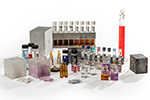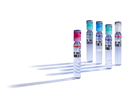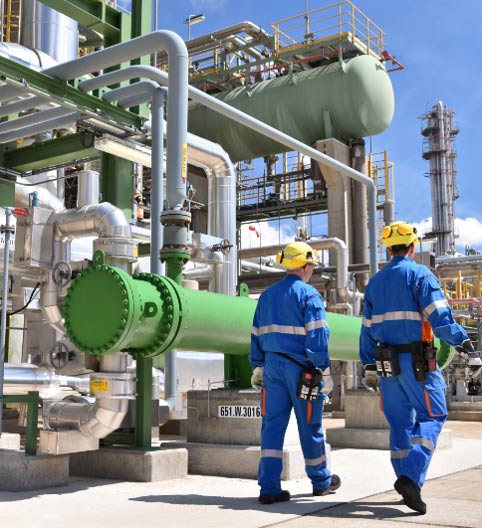-
Products
- Lab Instruments
-
Lab Meters and Probes
Calibration Standards Other Meters and Probes
- Chemistries, Reagents, and Standards
-
Online Analyzers
Ammonium Analysers Chlorine Analyzers
- CL17sc
- CL10sc Amperometric
- 9184 sc Amperometric
- Ultra Low Range CL17sc Colorimetric Chlorine Analyser
EZ Series Analysers- Iron
- Aluminium
- Manganese
- Phosphate
- Chloride
- Cyanide
- Fluoride
- Sulphate
- Sulphide
- Arsenic
- Chromium
- Copper
- Nickel
- Zinc
- Ammonium
- Total Nitrogen
- Total Phosphorus
- Phenol
- Volatile Fatty Acids
- Alkalinity
- ATP
- Hardness
- Toxicity
- Sample Preconditioning
- Boron
- Colour
- Nitrate
- Nitrite
- Silica
- Hydrogen Peroxide
- EZ Series Reagents
- EZ Series Accessories
- EZ sc Series Inorganics
- EZ sc Series Metals
- EZ sc Series Nutrients
-
Online Sensors and Controllers
Digital Controllers (Transmitters) Controllers (Analog)
- SC4500
- Orbisphere 410/510 Carbon Dioxide
- Orbisphere 410/510 Oxygen
- Orbisphere 410/510 Ozone
- Pro Series
pH & ORP Sensors- 1200-S pH
- 12mm pH/ORP
- 8362 sc High Purity
- Combination pH/ORP
- Differential pH
- Digital Differential ORP
- Digital Differential pH
- LCP ORP
- LCP pH
Dissolved Oxygen Sensors- 2582sc
- 5500 Clark DO
- 9582 sc
- LDO 2 sc
- Orbisphere 311xx
- Orbisphere GA2x00
- Orbisphere K1X00
- Orbisphere M1100
- Orbisphere Oxygen ppb
Conductivity Sensors- 3400 Analogue Contacting
- 3400 Digital Contacting
- 3700 Analogue Inductive
- 3700 Digital Inductive
- 3798 sc Electrodeless
- 9523 Cation Conductivity
- 9525 DCCP System
- Samplers
- Multiparameter Online Panels
- Test Kits & Strips
-
Microbiology
Accessories and Chemicals Dehydrated MediaInstruments KitsLabware
- Automated Lab Systems
-
Lab Equipment and Supply
Apparatus
- Brushes
- Clamps, Rings & Stands
- Crucibles
- Crucibles & Casseroles
- Dispensers & Droppers
- Grab Samplers
- Oil and Grease
- Other Apparatus
- Pipet Aids
- Pipettes
- Racks
- Stir Bars
- Tubing
- Weighing Accessories
General Lab Consumables Glassware/PlasticwareInstruments- Balances
- Hot Plates & Stirrers
- Microscopes
- Moisture Analysers
- Other Instruments
- Ovens & Incubators
- Thermometers
- Timers
- Vacuum Pump
- Industrial UV
- Flow and Collections
- Electrochemistry
- Parameters
- Industries
- Support
- Service
- e-Shop
Hach India
Choose your country or region:
Europe
Americas
Asia - Australasia
- Australia
- Mainland China
- India
- Indonesia
- Japan
- Malaysia
- New Zealand
- Philippines
- Singapore
- South Korea
- Thailand (Thai)
- Taiwan
- Vietnam
Middle East - Africa
Promotions INQUIRY: +91 9916040249
Industrial Wastewater Treatment
Ensure instrument reliability, cost efficiency, and compliance of environmental effluent
At Hach®, we embrace the challenge to continuously improve wastewater treatment monitoring equipment and processes to help your industrial plant stay in compliance, and ensure instrument reliability. Best of all, Hach solutions will help control costs while operating at the highest possible levels of health and safety.
Hach has thousands of wastewater treatment solutions for:
- Beverage
- Chemical
- Petrochemical
- Food
- Manufacturing
- Maritime
- Metals and Mining
- Plating
- Power Generation
- Pulp and Paper
- Airports
- And More!
Hach is committed to being an initiative partner to our customers with Claros™, Hach’s Water Intelligence System. With Claros, you can turn data into actionable insights to then adapt in real-time to variability in the incoming load. Claros also helps you stay in compliance and reduce operating costs with the confidence that your plant is running smoothly.
Industrial Wastewater Treatment: Critical Measurements
Learn which measurements are critical throughout the wastewater treatment process.
Pre-Treatment
Pre-Treatment of Water Used in Production
During the pre-treatment process, various treatment methods will be utilized, depending on the contamination and the concentration of incoming water from the plant's production side. For instance, pH control can be accomplished by adding a chemical to adjust pH for the other steps in the process. Solids may also be removed as a preliminary treatment process. This may include DAF (Dissolved Air Floatation) to remove solids, fats, oils, and/or greases. Some chemical plants may use a DAF as a way of removing chemical contaminants that separate or float. Chemical addition of coagulant also are used in these processes.
We understand your need to measure specific points throughout the wastewater treatment plant. For example, 70% of plants are pre-treatment only and partner with a municipality for the wastewater treatment and 30% have a wastewater treatment plan onsite. Each plant has unique needs, but in general here are the points of measurement you are likely most concerned with:
- Knowing the pH can help determine the treatment processes required. Certain coagulants may work best at a given pH range so making these adjustments can help improve the process.
- Identifying the incoming Total Suspended Solids can help determine dosing of those coagulants and air needed to remove the solids. Taking the TSS measurement at the end of the DAF would tell you the efficiency of the process.
- Total Organic Carbon (TOC) can also be monitored and used for the same type of control depending on the process. Removing as many solids as possible can help maintain the loading and eliminate huge process fluctuations in the biological portion of the plant.
Bulk Tank
The bulk tank is used to hold and equalize the process waste stream. This process helps to gain more stable influent into the wastewater process. Many industrial sites require a bulk tank for firefighting purposes, in the case of a fire emergency. Measurements taken here can give insight as to the treatment processes needed, such as organic loading. Heavier than normal contamination or upset conditions can make for process management issues. Knowing when these are happening can help determine the steps required to maintain control.
Stormwater Tank
Stormwater from a plant can consist of a collection of all water from storms and or potential spills in traffic areas such as loading docks and parking lots. Chemical spills, diesel fuel, gas, oil, and other contaminants need to be monitored and treated before discharged. TOC is becoming very common as a measurement parameter for looking at contaminating levels in these waters. Dissolved oxygen and pH can also give valuable insights into stormwater. During a heavy rain event, larger than usual quantities of water will enter the stormwater tank. This can be good and bad. Dilution of some of the higher contaminated contents helps but it can also make for higher levels of treatment. Separation of high level contaminants can help in the treatment process.
Biological Wastewater Plant
Inlet
During the inlet stage, wastewater is passed through a screen to remove grit and large suspended solids. What is called raw sewage or influent can go through a few different processes depending on what is in the waste stream. Some plants combine process waste with site sanitary sewer. Typically, bar screens are used to remove large contents such as rags, rocks, dirt, and grit from the influent.
Primary Treatment
During primary treatment, primary clarifiers allow organic solids to settle through gravity, while fats, oils, and greases are allowed to float to the surface. The settled solids are referred to as primary sludge and often are thickened in a downstream process before delivery into an anaerobic digester. The floating fat, oil, and grease are collected from the surface and are typically added directly to the anaerobic digester. A typical primary clarifier will remove approximately 70% of the solids and 45% of the Biochemical Oxygen Demand (BOD) from the screened wastewater. Modern facilities that operate enhanced biological nutrient removal processes often extract or ferment the carbon in the primary sludge and dose this side stream into anaerobic or anoxic processes downstream, as a food source for microorganisms.
Having a clear understanding of pH and TSS can be of great help in process control at this stage. However, flow rate changes can have a large impact on process control. High organic loading can also impact the process. Knowing as much about your sample can give the operators the ability to react to those changes.
Secondary Treatment
Secondary treatment removes the soluble organic matter, nutrients such as nitrogen and phosphorus, and most of the suspended solids that escape primary treatment. Most often, biological processes are used in which microbes metabolize organic compounds and nutrients to grow and reproduce. The two most common biological secondary treatment processes are attached to growth and suspended growth systems. A suspended growth process fosters the growth of suspended microorganism flocs from individual organisms already present in the wastewater and in the return activated sludge. The flocs contain organisms that can remove the pollutants through aerobic, anoxic, and anaerobic environments. Once the pollutants are removed, the flocs are sent to a secondary clarification process where they separate from the water via gravity. A portion of sludge in the bottom of the secondary clarifier is then directed back upstream to blend with the primary effluent (Return Activated Sludge) to create mixed liquor. The remainder of the sludge is removed from the process (Waste Activated Sludge) to create the ideal ecology of microorganisms. Attached growth systems rely on the microorganisms to attach to a media and create a biofilm. The settled sewage is either mixed or sprinkled over the biofilm-coated media where the microorganisms remove the pollutants. Like the suspended growth process, biofilm fragments and suspended flocs are sent to a secondary clarifier for separation where sludge is recycled and wasted and clean water is discharged to the next process.
For biological treatment to function efficiently, microorganisms require nutrients in a balanced ratio, including carbon, nitrogen, and phosphorus (referenced as C:N:P), as well as trace elements including iron, copper, zinc, nickel, manganese, potassium, sulfur, and other components which are typically present in wastewater. The commonly accepted C:N:P Ratio is 100:5:1, although some facilities thrive outside of this ratio, while others experience polysaccharide slime formation or filamentous bacteria growth that inhibit the biology and settling in the secondary clarifier.
Multiple biological processes can be employed to complete secondary treatment, including plug flow aeration basins, complete mix aeration tanks, sequencing batch reactors, oxidation ditches, trickling filters, moving bed biological reactors, integrated fixed-film activated sludge, and others.
Biological Nutrient Removal (BNR) alters the environment of the microorganisms to remove nitrogen and phosphorus from the water. A BNR process consists of anaerobic (no oxygen or nitrate), anoxic (no oxygen, nitrate is present), and aerobic (oxygen present) stages, during which the water is moved through a series of chambers to perform various biological functions.
Chemical treatment processes can also be used, such as the chemical removal of phosphorus. By introducing a chemical precipitant within the aeration basin and clarifiers, phosphorus is removed by flocculation, binding into insoluble compounds that settle out and can be removed as sludge.
Sludge Separation
The method for handling the sludge removed from the process depends on the volume of solids as well as other site-specific conditions. Aerobic digestion is often used by facilities less than eight million gallons per day of inflow. Waste Activated Sludge and if present, Primary Sludge, are added to an aerated reactor where microorganisms feast on the organics and microorganisms present in the sludge to reduce the volatile solids content and the overall mass of sludge. Anaerobic digestion is typically used at facilities greater than eight million gallons per day of inflow, and involves the use of sealed reactors to create an anaerobic environment for different organisms to feast on the organics and microorganisms in the sludge through the processes of acidogenesis and methanogenesis. The methane formed by anaerobic digestion can be used to fuel boilers to heat the digester, flared, or cleaned and repurposed as a green energy source. Removal of the heavy solids helps to reduce the load on the plant, leaving only the dissolved and small organics left to treat. Monitoring the sludge levels in the primary clarifiers can determine the rate of removal.
Maintain a healthy sludge level blanket in the clarifier is important for the removal process. Too light a blanket and the process can be upset by the removal arm. Flow rates can be determined by knowing this measurement.
Sludge Management
Thickening involves concentrating the sludge by removing a percentage of the liquid portion by adding polymer compounds and is often employed before anaerobic digestion. Dewatering with belt presses, centrifuges or other means further concentrates sludge into a cake. The cake can be further dried, or simply disposed of through land application or landfills.
Effluent
During the outlet stage, techniques such as filtration, disinfection, and carbon absorption are used to remove the remaining organic load, suspended or dissolved solids, pathogens, and heavy metals that pass through other treatment processes. The goal of this stage is to raise the effluent quality to the level suitable to its intended use, whether for discharge into lakes, rivers, or oceans, reuse as non-crop irrigation (parks, golf courses, greenways, etc), or for groundwater recharge.
Discharge into Receiving Water
A water monitoring station can prepare your plant for safe discharge into receiving waters. While effluent from wastewater treatment facilities is commonly discharged to the environment in rivers, oceans, or other bodies of water, there are a variety of other options for discharge. These include agricultural irrigation; use in parks and recreational facilities (golf courses and sports field irrigation, snow making); wildlife habitat or aquifer/wetland/marsh recharging; industrial uses such as process water; or for street cleaning.
Claros™ Process Management
Continuous Process Management for Industrial Wastewater Treatment
Claros™, the Water Intelligence System from Hach, integrates all plant data sources, including system data, device data, and manually-collected data, dynamically adjusting to changes in your process stream.
Claros provides continuous process management solutions for industrial wastewater applications. Claros allows you to manage your treatment process in real-time, keeping your facility compliant while ensuring efficient plant operation 24/7.
Managing your process has never been so straightforward.
Claros™ Solutions
BOD/COD Removal
Sludge Retention Time (RTC-SRT)
A correct Sludge Retention Time and Mixed Liquor Suspended Solids level in the aeration basin is fundamental for compliance and energy efficient treatment. Hach’s RTC-SRT system automatically adjusts the waste activated sludge to provide the ideal SRT and MLSS concentration ensuring stable BOD/COD removal and avoiding undesired nitrification.
Nutrient Dosing (RTC-C/N/P)
Having the correct C/N/P balance is critical for biological wastewater treatment. Hach’s RTC C/N/P system optimizes the dosing of nutrients like urea and phosphoric acid in industrial wastewater treatment plants, ensuring compliance on COD / BOD, NH4 and PO4. Cost for effluent discharges and on chemicals added are driven to an absolute minimum.
Most Open Valve DO Control (RTC-MOV)
Energy efficient aeration systems (blowers and valves) provide and distribute the process air at a minimum air pressure in the manifold and a minimum pressure loss across the air valves. The Hach RTC-MOV system controls the Dissolved Oxygen (DO) concentration in up to 16 different zones by providing set points for the corresponding air valve positions and for the manifold pressure (or airflow). The result is reduced costs and maximum available process air where it is needed most.
Nitrification/ Denitrification
Sludge Retention Time (RTC-SRT)
A correct Sludge Retention Time and MLSS level in the aeration basin are fundamental for compliance and energy efficient treatment. Hach’s RTC-SRT system automatically adjusts the waste-activated sludge to provide the ideal SRT and MLSS concentration, thus ensuring stable Nitrification all year round.
Phosphorus Removal
PO 4-P Precipitation (RTC-P)
Meeting the Total Phosphorus (TP) limit in the effluent of plants with chemical PO 4-P elimination can be very challenging. Varying inflow loads can hardly be managed with a fixed dosing rate of precipitant. Based on the measured PO 4-P, the RTC-P system calculates a setpoint for the precipitant dosing rate, ensuring fast reaction on inflow changes and precise control of the PO 4-P concentration to a desired setpoint. Through this, compliance on TP is supported while cost on precipitant and the amount of precipitation sludge is minimized.
CASE STUDY: RTC-P Brings Phosphorus Compliance Solution to JBS Beef ProcessingDischarge into Receiving Water
Sludge Thickening (RTC-ST)
Meeting the Total Phosphorus (TP) limit in the effluent of plants with chemical PO 4-P elimination can be very challenging. Varying inflow loads can hardly be managed with a fixed dosing rate of precipitant. Based on the measured PO 4-P, the RTC-P system calculates a setpoint for the precipitant dosing rate, ensuring fast reaction on inflow changes and precise control of the PO 4-P concentration to a desired setpoint. Through this, compliance on TP is supported while cost on precipitant and the amount of precipitation sludge is minimized.
CASE STUDY: RTC-ST Adjusts Coagulant Dosage, Lowers Operating Costs While Controlling TSS and pH LevelsCASE STUDY: Real-Time Control System Optimizes Phosphorus Removal in the Dairy Industry
Sludge Dewatering (RTC-SD)
Low cost for sludge disposal, minimum negative impact on returns, and low polymer consumption are core objectives in sludge dewatering. The RTC-SD system can achieve this by managing Total Suspended Solids (TSS) in thickened sludge and centrate by adjusting polymer dosing.
Dissolved Air Flotation (RTC-DAF)
High Total Suspended Solids (TSS) concentration in the sludge and low TOC/TSS concentration in treated effluent are core objectives in Dissolved Air Flotation (DAF). This can be achieved with the RTC-DAF system which controls TSS in the thickened sludge and discharge effluent by correctly adjusting pH, coagulant and polymer dosing.
APPLICATION NOTE: Advanced On-line Instrumentation Helps DAF Systems Lower Costs
Data Quality with Mobile Sensor Management
Quick Status Check
Many plant managers have concerns about trusting their data. Hach customers typically trust their data after just three short weeks of adopting Claros process management solutions.
Mobile Sensor Management allows you to view your measurements and instrument status—anytime, anywhere on any web-enabled device. The included Prognosys Predictive Diagnostic Software monitors the instrument’s internal components and tracking service requirements. Then, Mobile Sensor Management alerts you to upcoming maintenance tasks or identifies immediate issues requiring attention. It also provides simple maintenance instructions in the palm of your hand to give operators and plant managers the confidence that the maintenance is being done correctly.
Avoid Downtime
With Mobile Sensor Management, you can avoid unexpected downtime and have confidence in your water quality measurements.
Worry-Free Data Security
Keep Your Data Safe
Data security is our priority. Hach is committed to protecting the integrity of your data, with comprehensive data security processes, continual evaluation, and best-in-class partners such as Microsoft Azure to ensure data sovereignty and to eliminate opportunities for external intrusion. From data generation to transmission, storage, and retrieval, Hach is committed to keeping your data safe, now and into the future
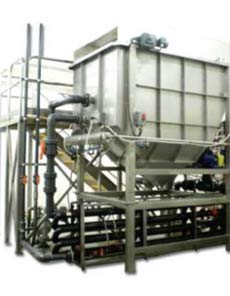
Lower Operating Costs While Controlling TSS and pH Levels
Control operating costs. Read this application note to learn how advanced on-line instrumentation provides continuous, real-time suspended solids measurement in DAF operations.
LEARN MORE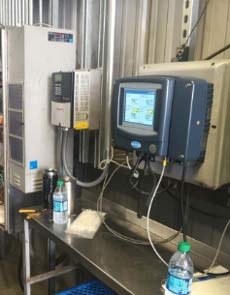
Real-Time Control System Optimizes Phosphorus Removal in the Dairy Industry
Don't let your chemical costs get out of control. Learn how one large dairy facility lowered chemical costs and reassigned some of their utilities mechanics' and operators' time to more productive tasks.
LEARN MORE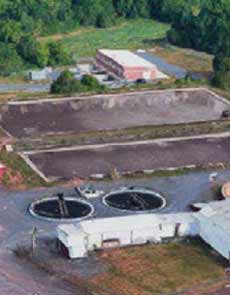
RTC-P Brings Phosphorus Compliance Solution to JBS Beef Processing
Take control of compliance challenges. Learn how JBS Beef Processing met total phosphorus compliance standards without a single violation after implementing the Real-Time Control Phosphorus system.
LEARN MORE
Advanced On-line Instrumentation Helps DAF Systems Lower Costs
There are many facets to industrial processes — raw materials, skilled labor, well-designed equipment, and sound methodologies. Here are several guidelines for implementing continuous monitoring to keep process integrity at optimum levels.
LEARN MOREIndustrial Wastewater Parameters
A variety of parameters are used in industrial wastewater pre-treatment, biological wastewater monitoring, and receiving water discharge. Browse the cards below to learn more about why these parameters matter. Or choose Explore Solutions Now to see solutions.
Explore Solutions NowAL
Alkalinity
Measuring alkalinity in water will inform its capacity to neutralize acids or absorb hydrogen ions. A slightly alkaline pH is important for effective biological treatment. The process of nitrification destroys alkalinity, which can result in a drop in pH, which will inhibit bacteria. Having visibility into your alkalinity will help avoid permit violations for ammonia and or pH.
AM
Ammonia
Monitor conversion of ammonia and organic nitrogen forms to nitrite and nitrate during the WW treatment process. Provides information on process conditions in biological treatment stages. At high concentrations and pH, ammonia can be toxic to sludge digestion microbes.
AS
Automatic Sampling
Automatic samplers are required to pull samples from different locations within a process so that laboratory tests can be performed. Samples may be collected as a composite or discreetly, depending on site and permit requirements.
BC
BOD5 and CBOD
BOD5 and CBOD indicate a relative measure of “food” available, the degree of stabilization of the wastewater, and estimate the effect of the effluent on the receiving water body. Used for plant loading/design, discharge rate for industrial facilities, and EPA NPDES reporting. Many plants use COD or TOC as an early estimate. Used to calculate % removal.
COD
Chemical Oxygen Demand
Used as a correlative/early indicator of BOD levels. Some NPDES permits include COD as a surrogate for BOD; however, BOD is the standard reportable parameter for oxygen demand in wastewater. COD provides a measure of organic “food” available to biological treatment steps and to estimate the effect of discharge to receiving water.
CTU
Chlorine Total and ULR
Chlorine is added to kill pathogens and reduce odor. Measuring chlorine will help ensure that your wastewater is properly disinfected by removing pathogens as well as satisfy regulations that require the removal of excess chlorine before discharge to surface waters.
CL
Color
Color can be an indicator of turbidity or suspended matter. The removal of this matter can be gauged by measuring color, which can indicate if the water quality is suitable for discharge.
CN
Conductivity
Measuring conductivity is a common method for determining the metal concentration in wastewater. Removal of these metals prevents environmental concerns. Conductivity is also an indicator of dissolved sodium which can assess stages of the treatment process that cause changes in conductivity.
DO
Dissolved Oxygen
To stay alive, the organisms that breakdown organic matter rely on oxygen. When there is not dissolved oxygen present, these organisms will die. On the other hand, too much oxygen could signify that your wastewater treatment process is wasting energy. Measuring dissolved oxygen levels can help dial in the right amount of aeration.
FM
Flow Meters
Flow measurement is crucial to a plant to know the volume and rate of the liquid passing through each process. These measurements are used to calculate loading and concentration factors for processing.
NT
Nitrate
Nitrate is indicative of the stage of conversion of ammonia and organic nitrogen forms to nitrate by the aerobic biological treatment steps (nitrification).
OA
Organic Acid
Determine if acidification has occurred during the effluent pre-treatment stage of your treatment process by monitoring pH and alkalinity. Making adjustments to pH and alkalinity balances organic acid.
OL
Organic Load
Indicates the amount of carbon nutrients required to feed and keep healthy the microorganisms in the process aeration basin. This parameter gives an indication of efficiency of the anaerobic digester process.
OR
ORP / Redox
Oxidation Reduction Potential is the ability for a solution to accept or lose electrons, and therefore be “reduced.” ORP can help determine whether activated sludge zones are anaerobic or anoxic to enhance biological nutrient removal. They are best applied as a trending tool.
pH/T
pH/Temperature
Maintain proper (narrow) pH range for optimal biological processes—especially nitrification. pH and temperature can indicate plant upsets by industrial discharges or the development of anaerobic conditions within the plant. It’s also an important parameter to assess methane formation and avoiding ammonia toxicity in sludge digesters.
PO
Phosphate / Ortho
Phosphate is removed via biological nutrient removal processes and/or chemical precipitation. Reactive (ortho) phosphate is the phosphorus form that is most available to biological species.
SL
Sludge Level
Having a clear measurement of sludge helps monitor sludge levels in the aeration tank, where sludge is mixed with air to breakdown organic matter. Monitoring sludge levels can indicate sludge buildup, process and chemical efficiency, and sludge settleability.
SAC
Spectral Absorption Coefficient
Measuring Spectral Absorption Coefficient is excellently suited to use as a regulation parameter for an ozone system.
TN
Total Nitrogen
Total of ammonia, nitrate, nitrite, and organic nitrogen forms.
TOC
Total Organic Carbon
TOC levels in water impact treatment and re-use decisions. With data on TOC levels, water managers can make the most efficient and cost-effective decisions for treatment and reuse of important water supplies.
TP
Total Phosphorus
Phosphorus effluent concentrations are often controlled by discharge permits to limit the addition of nutrients to the receiving body. Total phosphorus may be removed either biologically or chemically. It includes ortho-, poly-, and organic phosphorus.
TSS
Total Suspended Solids
TSS is the most commonly measured and regulated parameter on NPDES permits. Used to measure mixed liquor suspended solids concentration, return activated sludge/waste activated sludge concentration, influent suspended solids concentration, effluent suspended solids concentration, and % removal.
TX
Toxicity
COD is the sum parameter that provides the most reliable and timely information about the oxygen-depleting effects of organic pollutants in wastewater. COD also supplies an estimate of the effect of your plant’s effluent on the receiving body.
TR
Turbidity
Turbidity is a surrogate measurement for solids concentration. This parameter often is used to indicate solids carry-over from secondary clarifiers.
Watch Webinar On-Demand: Industrial Wastewater – innovative solutions for real-time management, online monitoring, and connected data
Are you prepared for the unknowns of tomorrow in your wastewater stream? Watch this webinar to learn about innovative solutions to take control of your wastewater treatment plant and pretreatment processes—from dosing to downtime and everything in between with solutions that provide real-time information, connected data, and online monitoring.
Additional Industrial Wastewater Treatment Resources
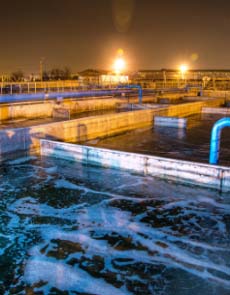
Grab Sampling vs. Continuous Monitoring: Put The Odds In Your Favor
With relatively predictable flow patterns, wastewater treatment plants are conditioned to respond to the ebb and flow of demands with a series of small tweaks. Learn how to make opportunities for more responsive control.
LEARN MORE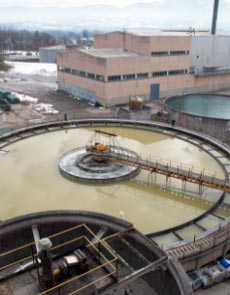
Organic And Nutrient Monitoring For Industrial Process Optimization
The industrial wastewater treatment process is rich in parameters and regulations. Here are several ideas for how choosing the right analyzer technology can help optimize both the performance and costs of industrial processes. for wastewater treatment.
LEARN MORE
Proactive Wastewater Management Through Real-Time Control (RTC)
Plant automation made practical by on-line analytical capabilities and real-time control (RTC) helps wastewater treatment operators at every skill level be more effective at proactive management of process efficiency.
LEARN MORE
Industrial Process Optimization Through Process Water Integrity
There are many facets to industrial processes — raw materials, skilled labor, well-designed equipment, and sound methodologies. Here are several guidelines for implementing continuous monitoring to keep process integrity at optimum levels.
LEARN MORE

